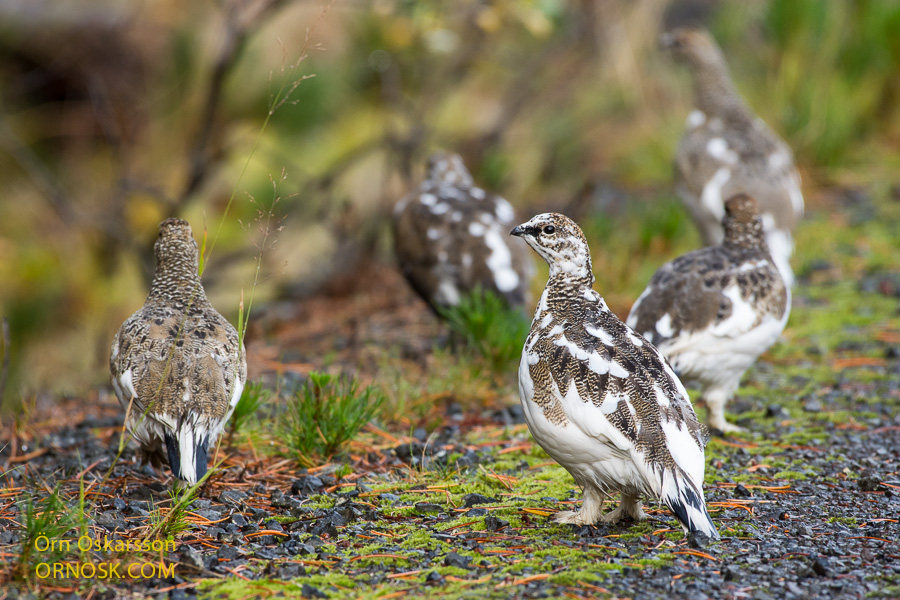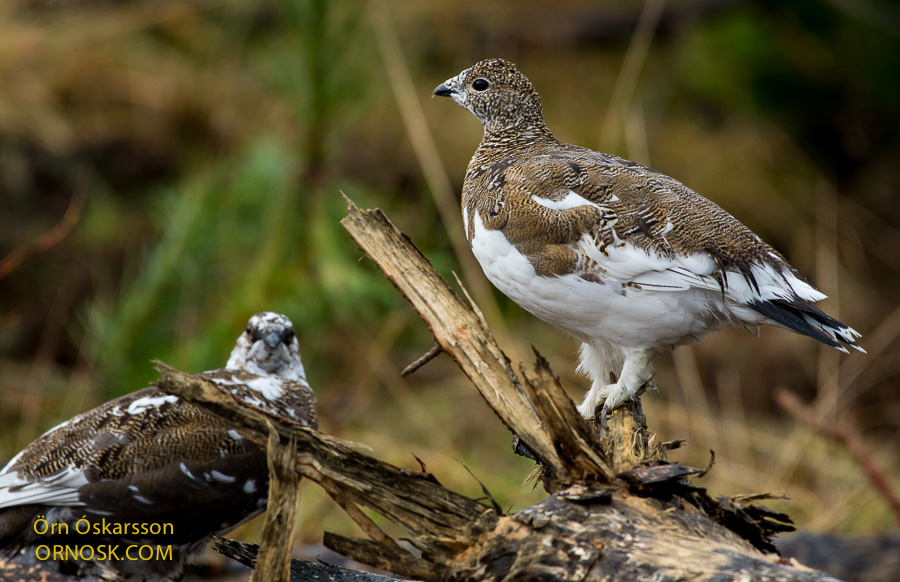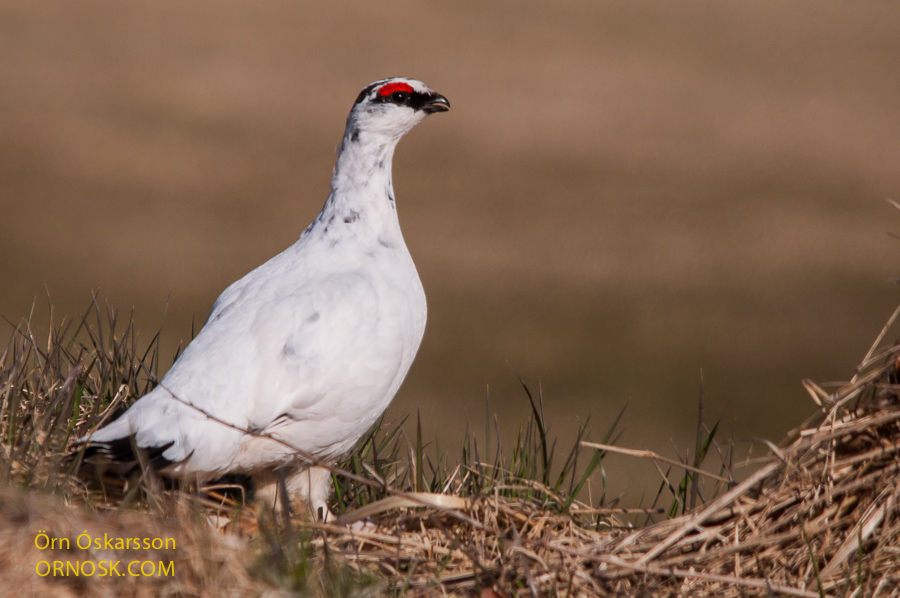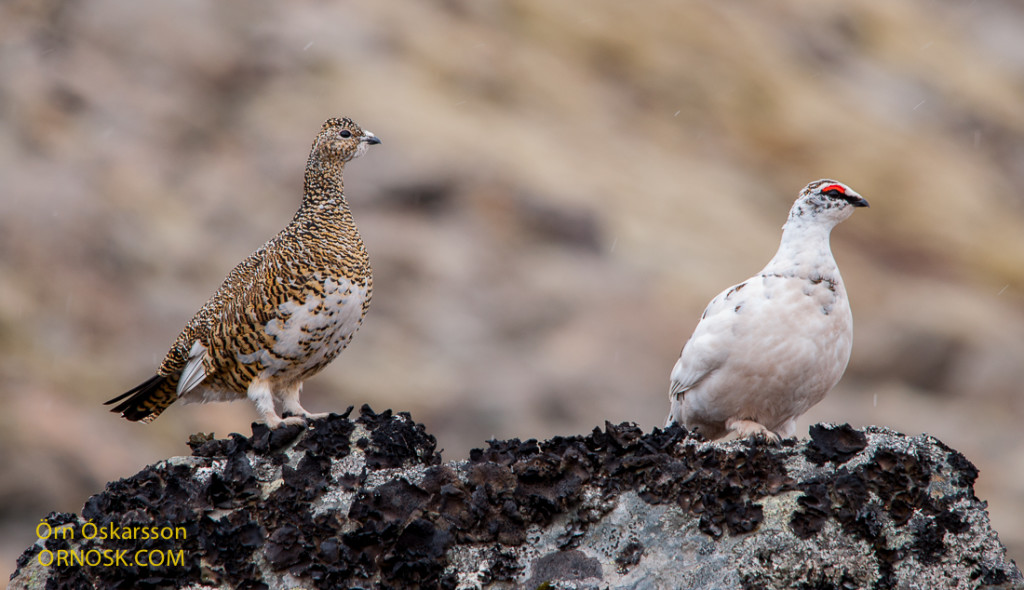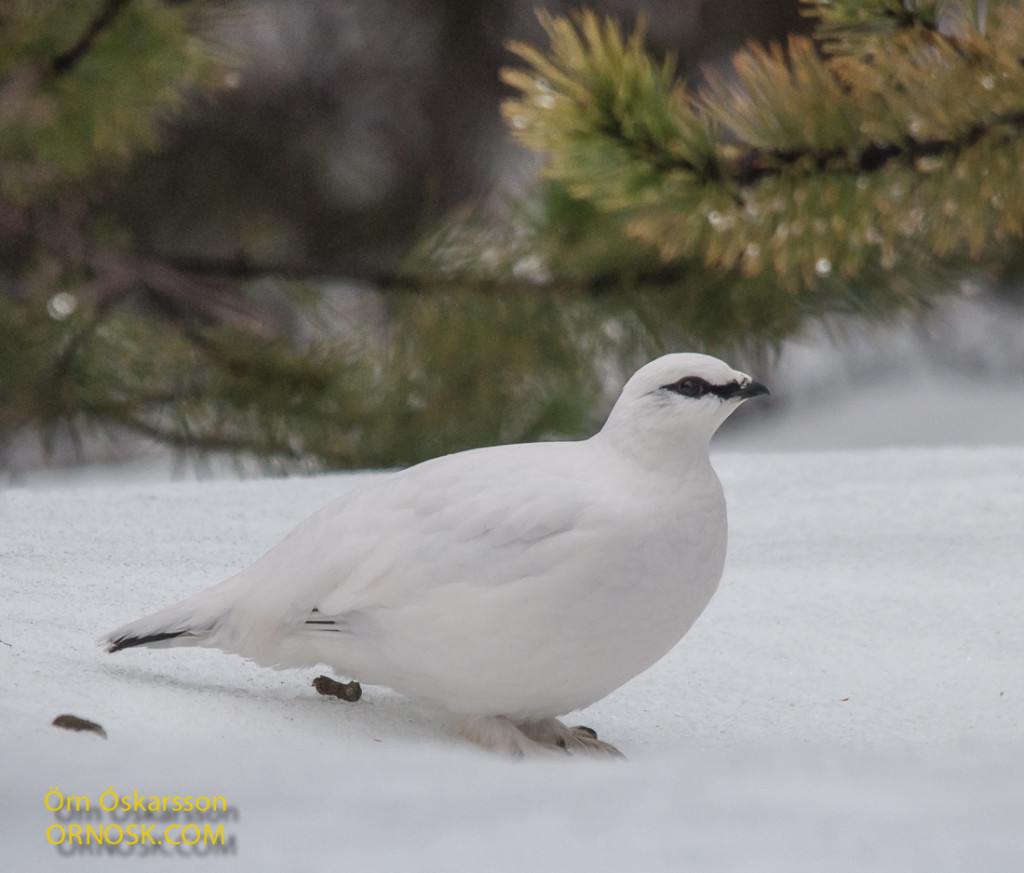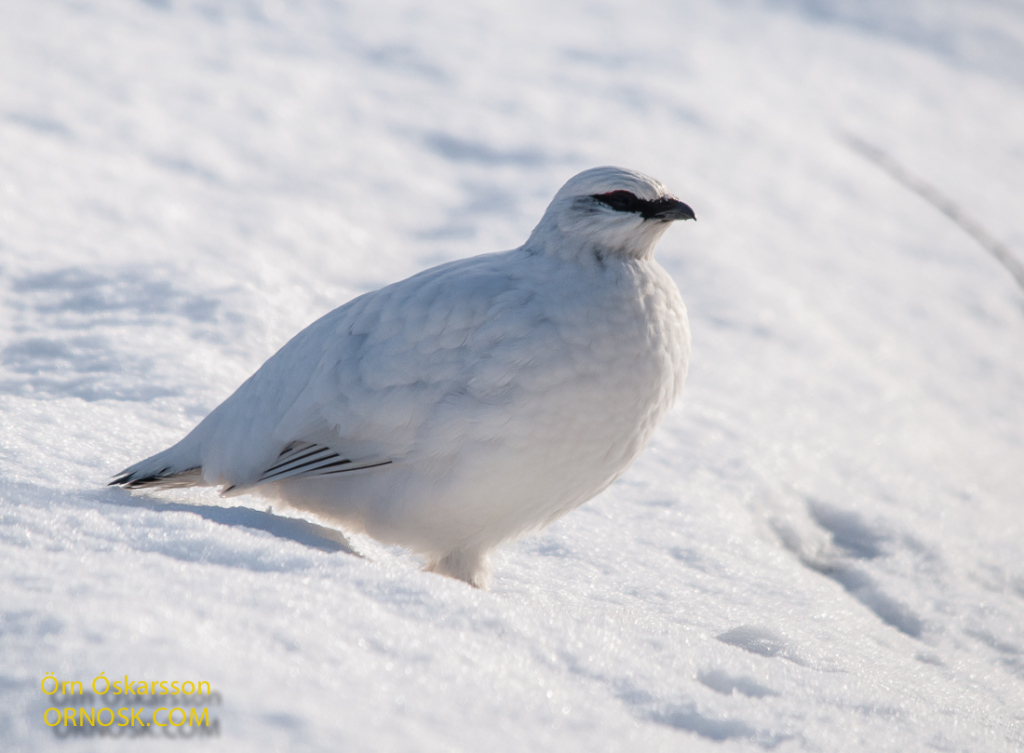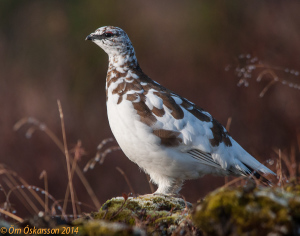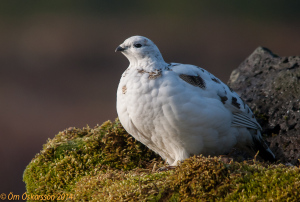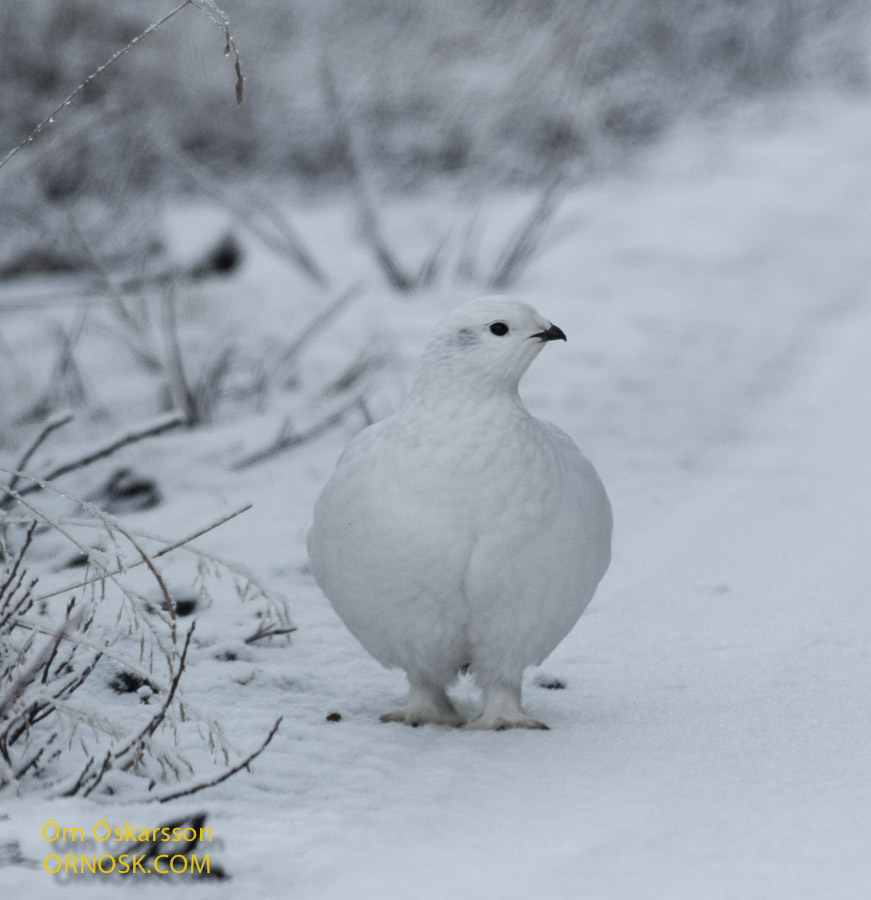
The Ptarmigan blends well into the snow covered landscape in its winter plumage. Predators such as foxes, falcons and the human can not easily spot it in the winter twilight. This Ptarmigan has survived the hunting season which is limited to a few long weekends in October and November. Ptarmigan used to be a popular Christmas dinner in Iceland but as the stock has been decreasing in numbers and the hunting season limited, fewer and fewer families chose to eat this beautiful bird. That is something to be thankful for.

